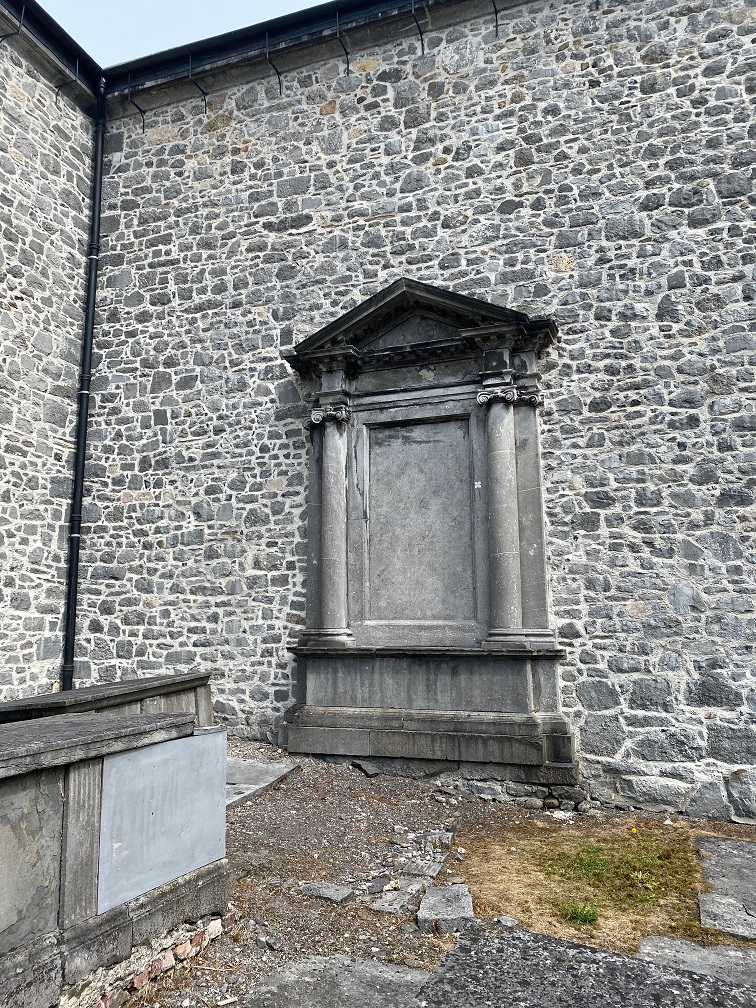
The ancient graveyard at what is now the Medieval Mile Museum
From a woman who might have died on the medieval crusades to the Holy Land to a wealthy entrepreneur who thought he could run a mill in Kilkenny with dogs, stories are bursting from the stone memorials in the graveyard of what was St Mary’s church, now the Medieval Mile Museum.
Despite their grey, impassive appearance, these markers we pass every day are the keepers not only of the city’s history that we know so well, but the characters and the stories of their antics, that sparkled in the ‘golden age’ of medieval Kilkenny.
Heritage Week was the perfect opportunity to delve a bit deeper into these stories with a lunchtime tour of the museum and its graveyard.
TAP HERE FOR MORE WHAT'S ON IN KILKENNY
Our tour was led by the wonderful John Halpin, whose knowledge of times-past in Kilkenny was not only informative but full of the kind of entertaining true stories that they don’t tell you in school!
There are 800 years of history contained both inside and outside the Medieval Mile Museum. Its origins as a place of worship mean it was also a place where people were buried.
Although, as John pointed out to us, not just any people. St Mary’s Church was a city centre church for the rich, medieval merchant class of Kilkenny — one of the reasons it is now such a rich repository of memorials dating back hundreds of years.
When the first stone chapel opened on the site it was ‘swimming in millionaires’. Wealthy merchant families in Kilkenny were ‘tied’ to the church by allowing them to bury family members inside the building.
At one time there were 16 private, family chapels as part of the complex. Now there are two, those that had been dedicated to the Rothe and Archer families.
One story goes that so many were buried in the church that the stench of decay prompted locals to decry the ‘stinking rich,’ or so one origin story of that phrase goes!
It’s in one of these alcoves that now we can see many of the stone memorials, taken inside for their own protection.
The most impressive is the memorial to Richard Rothe, the ‘king’s man in Kilkenny’ in the 1600s. Not only does it take up almost one full wall of the chapel but a still-stunning blue paint used on its flower decoration could only have come from one place in the world back then - Kabul in modern day Afghanistan.
Richard wasn’t the first very wealthy person memorialised in St Mary’s. Even older are two effigies of married couples, discovered in excavations of the grounds in recent years.
These tomb effigies bring us a surprising amount of tantalising details of life in medieval Kilkenny. One of the ladies can clearly be seen to be dressed in what would have been the height of fashion. Another lady is shown with her legs crossed - which could indicate that she died on the crusades! It’s a mystery we can’t solve but another clue to the mystery couple’s origins is her husband’s prominent ‘fleur de lis’ symbol, marking him out as a French man.
Another effigy bears the marks of Cromwell’s troops.
Outside the main church building one of the largest engraved stones is dedicated to a William Collis (see picture below). A rich businessman and entrepreneur, Collis invented an apparatus to separate flax seed from the flax. However, he is also remembered for coming up with the idea that he could operate his flax mill with just terriers! He could not.
Plan your visit to the Medieval Mile Museum to hear more of these amazing stories!

Subscribe or register today to discover more from DonegalLive.ie
Buy the e-paper of the Donegal Democrat, Donegal People's Press, Donegal Post and Inish Times here for instant access to Donegal's premier news titles.
Keep up with the latest news from Donegal with our daily newsletter featuring the most important stories of the day delivered to your inbox every evening at 5pm.